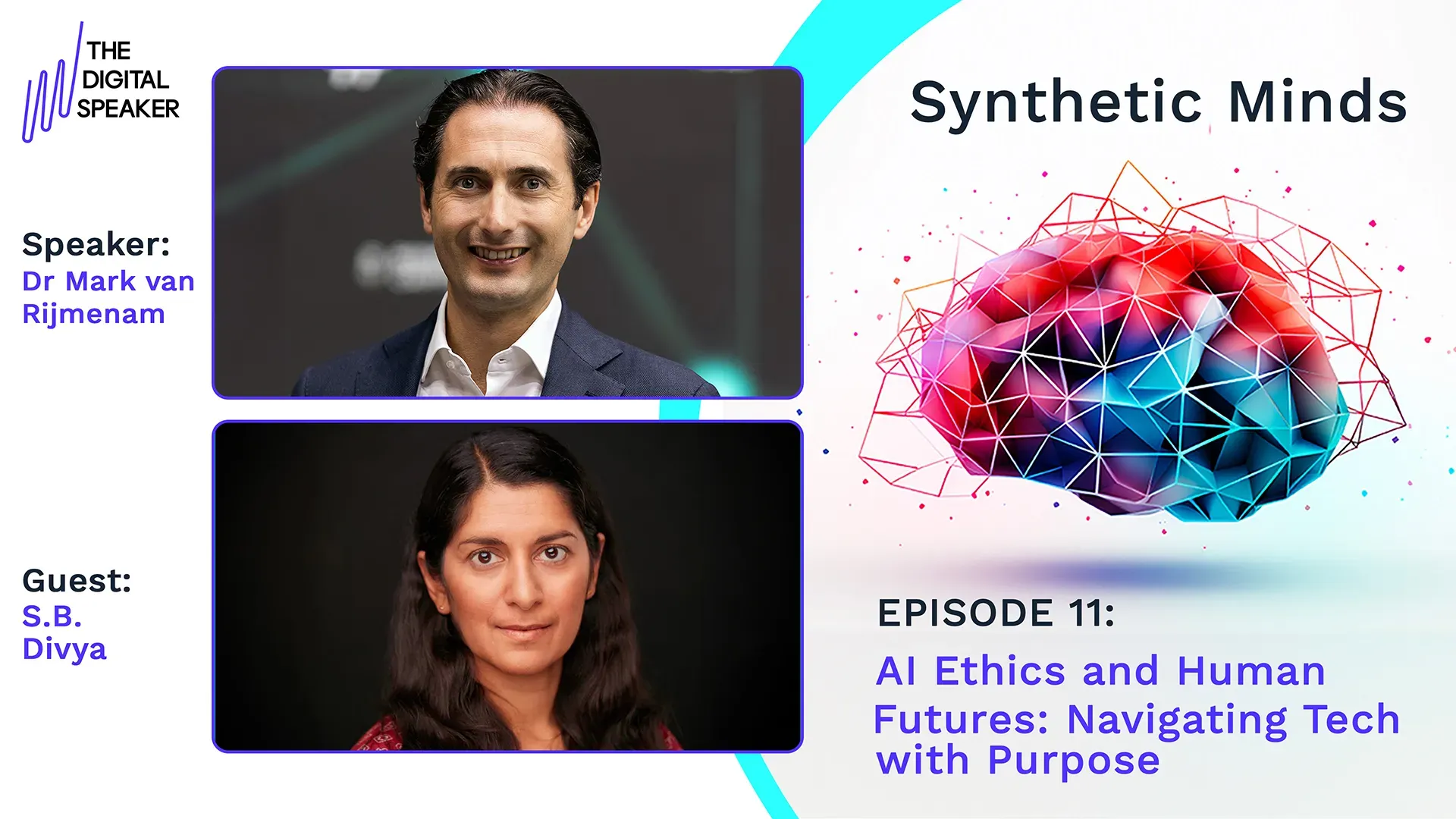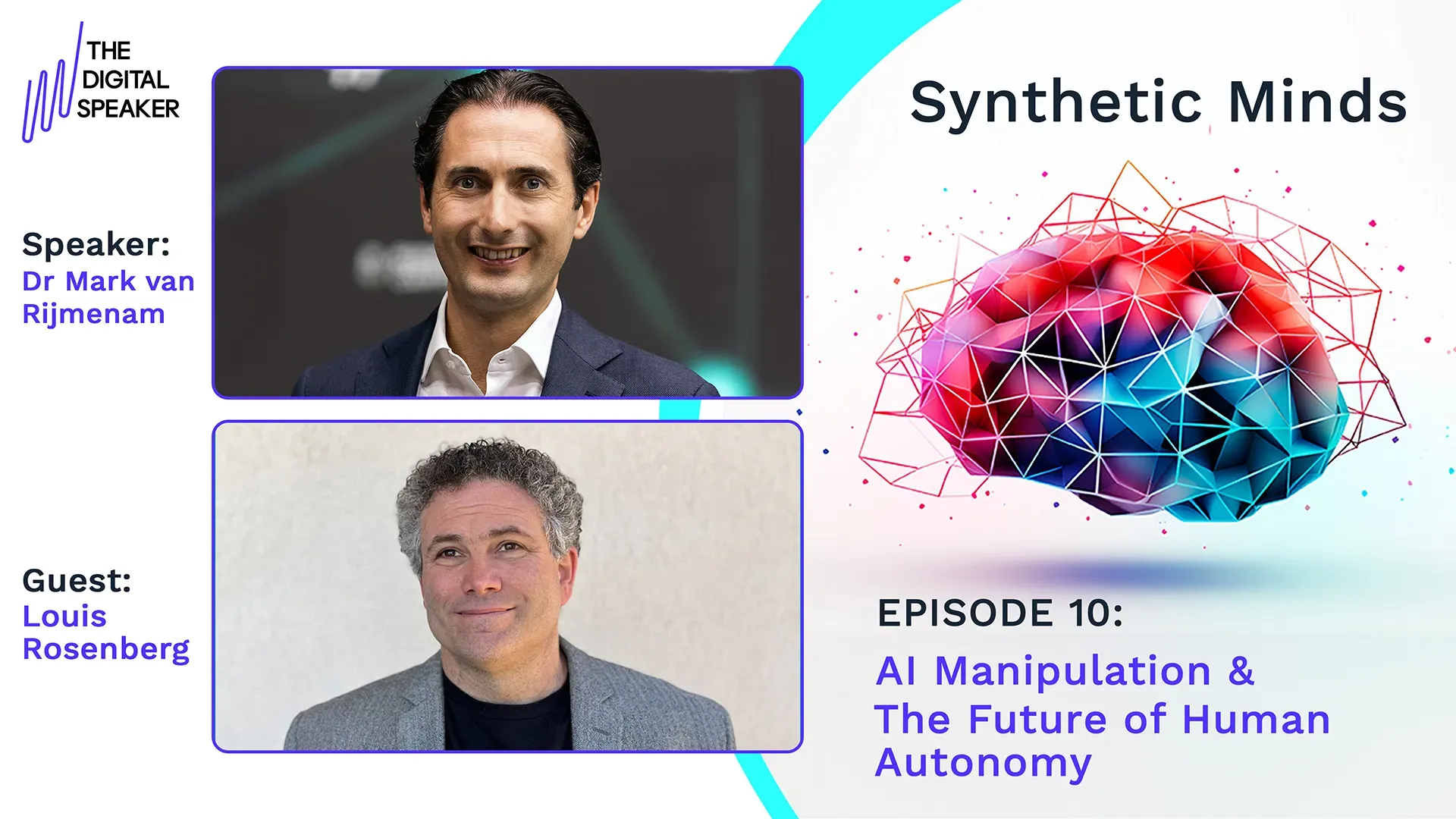Crypto, Regulators and Digital Central Bank Currencies - EP17

What did the blockchain say to the Central Bank? I defy you.
Ok, try this.
What did the whale shout to buyers? Mine!
There’s no pleasing some people.
Hello everyone and welcome to the Tech Journal. My name is Mark van Rijmenam, and I am The Digital Speaker. From Brain-Computer Interfaces and Monkeys playing pong, through to algorithmic management and NFTs, I aim to examine innovations and breakthroughs through my digital lens, taking a closer look at what they are and what they mean for our businesses and our personal lives.
In today’s video, I want to take a look at what’s new in the cryptocurrency world, exploring some of the latest news and trying to get a clearer vision of what the future holds. And on that note, it’s time to start today’s digital download.
You can either view the episode above or view it on Vimeo, YouTube or listen to it on Anchor.fm, Soundcloud or Spotify.
Bitcoin
As Crypto is the topic, it would be rude to not mention the king of cryptos, no, not old Musky boy, I mean bitcoin itself.
Bitcoin has been on everyone’s lips since its founding over a decade ago, with peaks and troughs taking hodlers – yes, hodlers, not holders, look it up – on a rollercoaster of emotions, the currency has always been littered with uncertainty, and today isn’t any different.
Recently, big bitcoin players have been dropping like flies, with John McAfee, a famous bitcoin whale and antivirus king, dying in prison, and Mircea Popescu, a bitcoin whale whose holdings are thought to be in the billions, drowning in Costa Rica. News of this whale drowning has brought more uncertainty to the coin.
As Mircea’s refusal to sell billions in bitcoin is a key factor in the price, should whoever inherit the fortune decide to sell, bitcoin may find its price crashing to the depths of 2018, when the price dropped from fifteen thousand to three thousand.
The price of this digital currency, as with all currencies, follows the simple rules of supply and demand. Meaning, if his family decides to sell and millions of bitcoins suddenly flood the market, the price would be in trouble.
Having said that, the rumour mill is hard at work and suggests the family doesn’t have access to the funds. If this is the case, Mircea’s bitcoin fortune would be lost forever, wiping his capital from the market causing prices to increase due to a drop in supply.
However, it’s not all doom and gloom. While some are unsure of the future, others speak with steady voices. Ricardo Salinas Pliego, the influential Mexican billionaire and owner of Banco Azteca, speaks confidently about Bitcoin’s future, dismissing others like the more sustainable and digitally advanced Ethereum and the memecoin Dogecoin.
He already publicly bought bitcoin last year, using ten per cent of his liquid investment portfolio to acquire what was probably several bitcoins -he is a billionaire after all. He also backed Monero and Zcash, two other, privacy-focused, coins. If plans go his way, his bank, Banco Azteca, will become the first in Mexico to accept bitcoin.
These grand gestures are the cornerstone to digital currencies, as seen by Musk’s own grand gestures both raising and lowering Bitcoin’s price over the space of only a few months. These types of confidence-boosting events are pretty common, with Dogecoin having a metaverse party, where one million Dogecoins and NFTs were given out to all who turned up to the online event.
Unfortunately, not all big events can be positive, especially when it comes to the digital sphere.
Cybercriminals Patrolling the Metaverse
Cybercriminals have been around since the dawn of digitisation, with hackers and scammers constantly patrolling the metaverse on the prowl for their next victim.
Recently, two South African brothers who ran their own crypto trading platform, made off with just over $3.4 billion worth of Bitcoin. The brothers initially told clients they’d been hacked and not to contact the authorities before vanishing into thin air. With so much potential to gain a huge amount of untraceable capital, it’s no wonder some can’t resist the temptation.
It’s not just stealing existing crypto where cybercriminals focus though.
Recently, an anti-virus firm, Avast, came out and announced they’d discovered a new type of cyberattack focused on crypto mining. Cybercriminals had been installing a new crypto-mining malware, Crackonosh, into mainstream games. This malware uses the victims processing power to mine crypto whenever the game is running. The cybercriminals have gotten away with two million dollars worth of Monero, and are still no closer to being caught. Their system is now known which puts a lifespan on this version, but if this is just our first peek into this type of malware, it begs the question of how prevalent this already is. Potentially many more programs already have this secret malware hidden inside them, silently mining Monero. Cybercriminals aren’t the only ones giving crypto a bad name though.
Elon Musk’s Bitcoin Flipping
In a move that many described as market manipulation, while others only as a simple flip, Musk opened Tesla up to accepting Bitcoin in exchange for cars, pumping the price. Then, only a few weeks later, flipped on his decision and rejected the coin claiming it’s too environmentally damaging to be associated with Tesla, sending the price falling. More recently, this time alongside Amazon, he told the world that he might start accepting bitcoin after all. Musk cited bitcoin mining as being especially bad for the environment. With bitcoin mining warehouses kept on twenty-four hours a day, Cambridge researchers claim it’s equal to one hundred and twenty-one terawatt-hours a year, which works out to more than the entire country of Argentina.
And that’s just bitcoin. With all the crypto mining going on, we’ve potentially sleepwalked into a new environmentally damaging industry.
Although progress is being made. We’re watching new consensus mechanisms being developed, one being the proof of stake method wherein validators will have to put up their own crypto as collateral. Basically, new blocks aren’t determined by processing power, but instead the size of the validators holdings. The main argument in favour of this is that it significantly lowers the energy consumption of mining some crypto.
While it’s perfectly acceptable and very human to change one’s mind as new evidence comes in, the general public turned against Musk, and saw a vast swathe of retail traders trying to short Tesla, in an attempt to crash the stock. The attempt was pretty short-lived though as Tesla stock has already recovered from the small low of $644 on July the seventh.
Not everyone took Tesla’s announcement badly though. NVIDIA, a US technology company, announced they’ll make efforts to produce GPUs with less hash, making them harder to use for crypto mining. NVIDIA chips have notoriously become key assets in Crypto mining, as gamers and digital enthusiasts alike find themselves unable to get hold of any new NVIDIA chips thanks to crypto miners’ bulk buying. While you’d expect a move like this to alienate the company, causing their products to lower in demand and therefore in value, the move actually had the opposite effect, proving their dedication to ethical digital innovation and to their target audience.
With all these ups and downs in the digital finance world, and more with Dogecoin and the general concept of memecoins becoming widely accepted, government bodies are looking to get in fast with regulations, shutting down the decentralised and runaway new digital industry as much as they can.
Regulators Banning Crypto
Recently, we saw the leading cryptocurrency exchange, Binance, banned by the UK’s and Japanese’s financial regulators. The move, if anything, highlighted more the ineffectiveness of country-specific regulations, as traders within the UK and Japan continued trading. The bans only affected Binance’s in-country offices, and they continued operations from international servers.
However, traders can’t withdraw any funds to bank accounts within the affected countries. The companies were accused by the financial regulators of operating without licenses and mis-selling cryptocurrency investments. It seems like we’re witnessing countries trying to catch up with the fast-paced world of cryptocurrency.
Of course, it’s not just the UK and Japan getting on the anti-crypto bandwagon. China is and has been at the forefront of state-sanctioned crypto regulations for some time now. On the 18th of June, Chinese Authorities ordered all bitcoin mining operations in the Sichuan province to cease operations. China’s central bank, the People’s Bank of China, summoned various major banks and payment companies, directing them to come down harder on all cryptocurrencies. The institutions were told they cannot provide any products relating to crypto, from trading through to clearing transactions. With this order resulting in the closure of 26 mines, the bitcoin price crashed once more, reaching new recent lows of twenty-eight thousand US Dollars.
Decentralised Finance
All this government interest in crypto may spell disaster for earlier, less developed currencies like bitcoin, but be in favour of more advanced and adaptive blockchain networks, and their respective currencies, such as Ethereum, Cardano or Polkadot.
Whoever wins the digital currency race, decentralised finance, these days simply known as DeFi, is becoming ever more stable.
Most decentralised currencies don’t use bitcoin’s blockchain, which is inflexible and rigid, but instead, use Ethereum which easily reached the mantle of the world’s second-biggest cryptocurrency thanks to its blockchain’s programmable nature. A major perk of this programmable nature is the ability to create smart contracts, sometimes referred to as transaction protocols. Basically, the paying party, or the party handing over their Ether, can create a smart contract and put it there, programming the contract to only release the Ether once the control has been fulfilled.
The smart contract acts as a third party, further removing the need for corruptible human elements from the transaction equation, taking the very Defi dream, to its logical conclusion. But it’s not over there, no. Ethereum is making huge strides in the crypto world and, come 2022, Ethereum 2.0 will be launching. Ethereum 2.0 wants to open itself up to a wider market and trade at much higher volumes, and so is setting out to achieve two things.
First, raising the blockchains minimum transactions to one hundred thousand per second. The creators hope that’ll create a more streamlined blockchain making network clogs a thing of the fast. And second, drastically reduce the energy required to mine the currency.
As I mentioned before, the environmental effects of crypto mining are on everyone’s lips right now and so it’s no wonder Ethereum wants to address that if it’s serious about its future. Right now, Ether, like other cryptos, validate transitions by a proof-of-work protocol, generally referred to as mining, which uses the miner’s computer processing power to solve complex puzzles. Ethereum 2.0, on the other hand, aims to change this to proof-of-stake, which looks to verify blockchain transactions by getting miners’ to put up their existing coins as a stake. With no mining rewards or transaction fees, once Ethereum and Ethereum 2.0 merge, Proof-of-work mining will become obsolete. So, while Bitcoin currently sits as King of Crypto, if I were a betting digital twin, I’d wage Ethereum 2.0 will overtake bitcoin and the bitcoin blockchain the next decade. Whether that’s due to Ethereum’s growth, a bitcoin crash, or a little of both, I can’t say, but I already said in 2017 that Bitcoin will become the MySpace of the crypto world; the first to market but the last to evolve.
Still, regardless of what happens with digital finance, government regulators will increasingly involve themselves as civil servants become increasingly digitally literate.
Anti-Trust Cases
Evidence of this can be seen with the rising regulatory interest in digital giants, such as the recent string of anti-trust breaches made by Google. In the EU, Google has been accused of monopolising market data by the European Commission. They’re accused of keeping data to themselves and their customers, and is the fourth time charges are being brought against them by the European Commission. The other three anti-trust charges equalled a totalled of 8.2 billion euros or 9.7 billion dollars in fines.
They’ve also been hit by France specifically. The French Competition Agency charged Google with a historic five hundred million euro single fine after failing to negotiate fairly with news publishers. Google was reported to have forced deals and was unwilling to negotiate profit sharing. Google was given two months from this fine to negotiate payments for the protected news content otherwise face more fines, next time though being 900.000 euros, or one million dollars, every day they don’t implement it.
Over in the US, Google isn’t doing so much better. They’re being taken to court over mismanagement of their app store, and last year over a secret deal with Apple to make Google the default search engine on Apple products. What was a landmark case last year, is now becoming a regular occurrence. If this continues, we may begin to see more anti-trust cases brought against the other digital giants, as they’ve all gotten so large, they run the risk of becoming monopolies.
Facebook, Amazon, and Google all have firm holds over their respective markets, and while the other giants put up with higher levels of competition, none can compare to the goliath-hold these companies have over the free market. Still, it’s not all doom and gloom as financial institutions look to catch up with the digital tide.
Digital Central Bank Currencies
As centralised finances become ever more outdated, governments will need to either embrace the change or be left at the mercy of the free market. China’s DCRP is a great example of a country embracing digitalised finances and has already seen $5.3 billion circulated around twenty million individuals via seventy million transactions. Talking about the DCRP, China’s answer to digital currency, the European Central Bank announced just this July, that they’re now looking to create a digital Euro.
Much like China, the European Central Bank has been keeping a close eye on the rise of cryptocurrency and have had the foresight to create a digital version of their cash, in this case, the Euro, before it’s too late. Unlike China’s foresight though, it took COVID to act as the catalyst for the shift, as the pandemic sparked an increasing trend to go cashless and created a world where even beggars have a QR code.
The ECB have announced that they plan to take two years to research then three to develop the digital Euro, meaning right now we are looking at a 2026 arrival. As this goes ahead, we get an image of the future where the Euro and the Chinese Yuan are the first centralised digital currencies, potentially propelling both currencies to positions more valuable than the dollar.
Final Thoughts
What do you think the digital future of finance looks like? Do you think we’re moving towards decentralisation, or will this have an adverse effect and simply firm up the state’s grip? Let me know what you think in the comments.
And on that digitalised note, I have been your digital host, Mark van Rijmenam, The Digital Speaker, and this has been The Tech Journal. If digital innovation gets your imagination firing, be the first to hear about the latest digital breakthroughs. Press the subscribe button now.
See you next time for your information download. Stay digital.





























